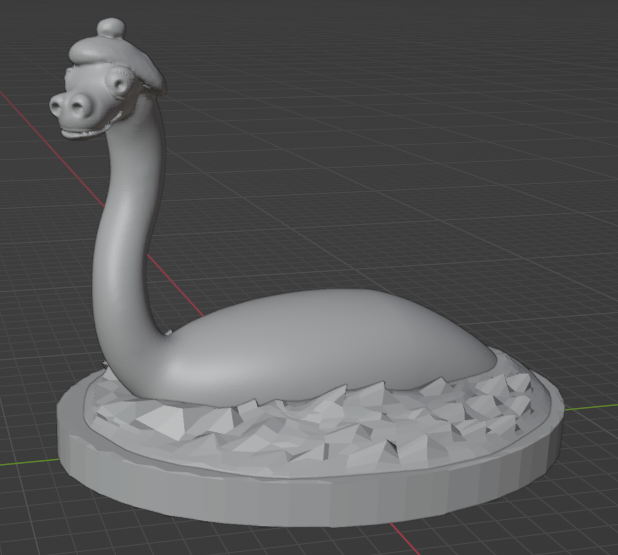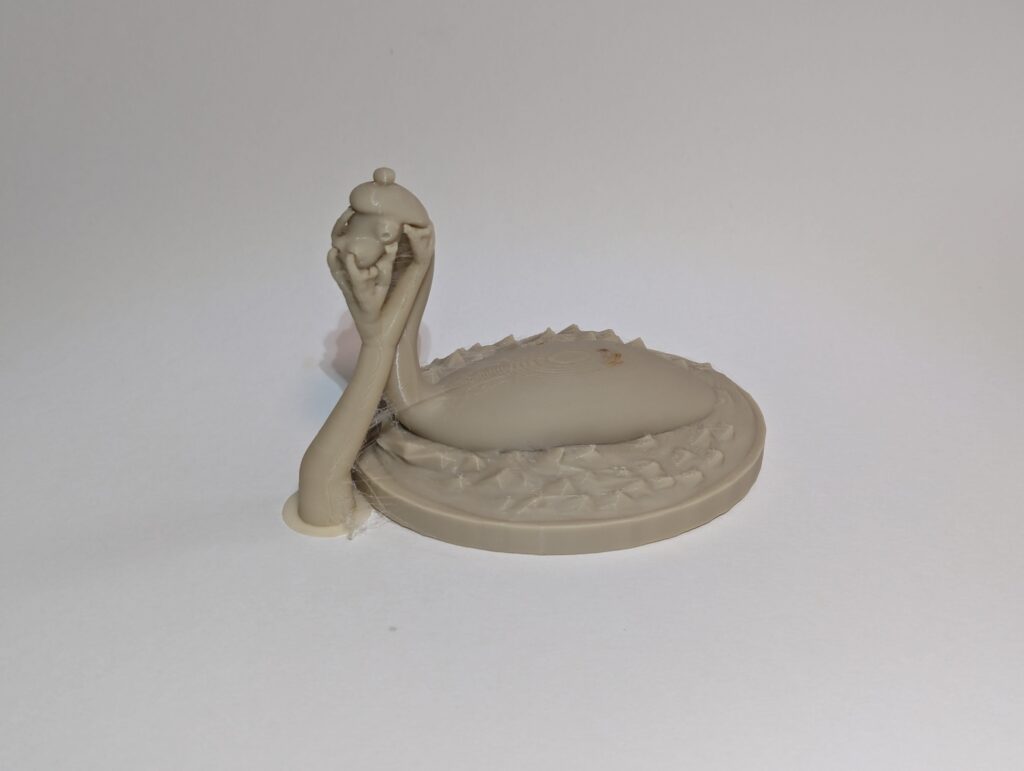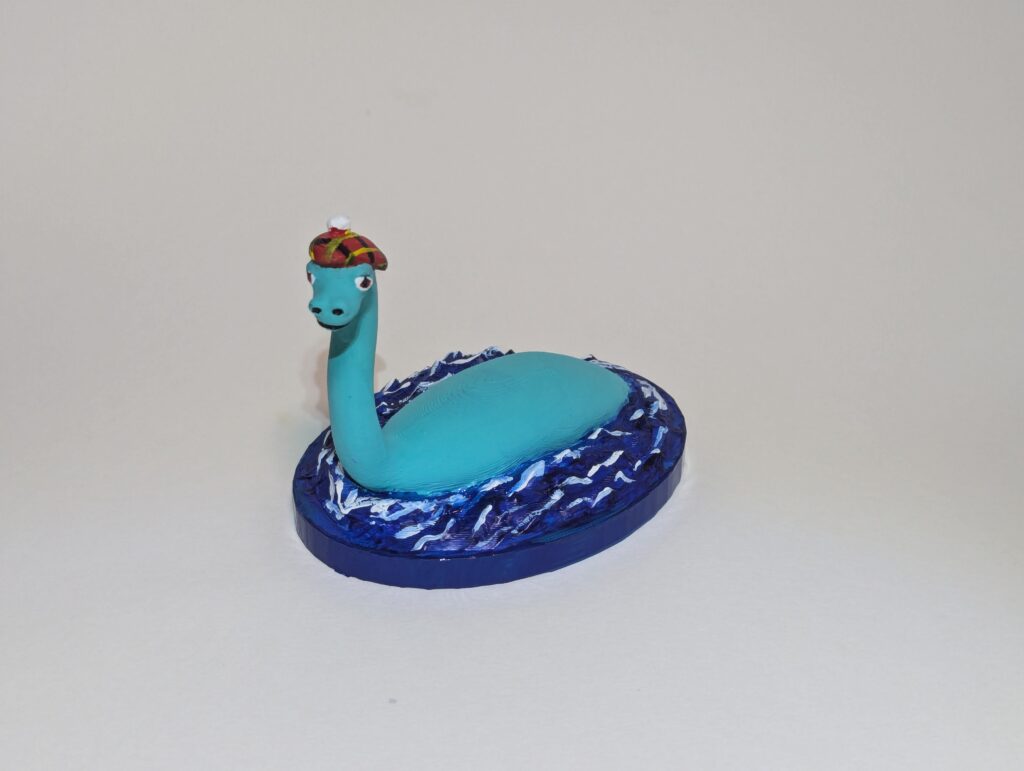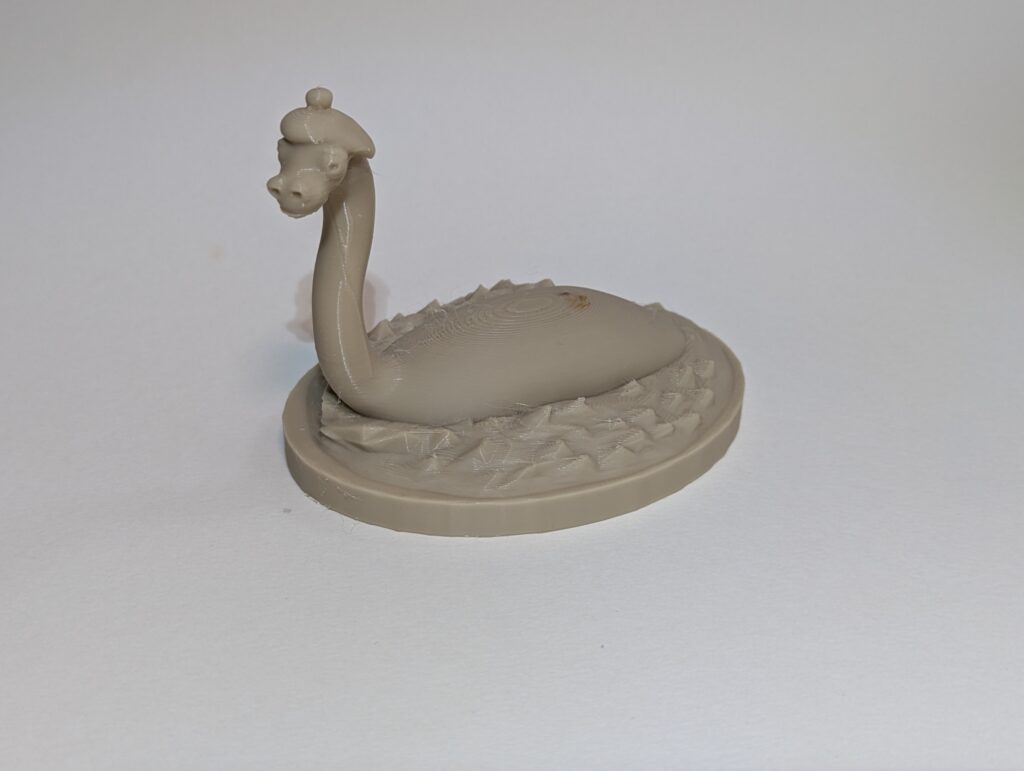“I am gonna need about tree fiddy.” – Loch Ness Monster
Yesterday over on my art and 3D modelling page Stepbastard, I dropped a new 3D printed design in honor of our favorite subject over here. Cryptids. This one, as you could have predicted from the title of the piece and the primary image is the Loch Ness Monster.
I took a more whimiscal view of the Loch Ness Monster with this model. The main reason being that I feel like Nessie as it is called is one of the great hoaxes of the modern era, and regardless of our views on Cryptids and specifically on water monsters in general; we should keep a sense of humor about the whole thing. I used Tree Fiddy of South Park fame, because they are masters of reminding us to do this…and it is one of my favorite episodes.
To continue the whimsy, and magnify the artistic license I am taking with this particular model. I put together the original reporting of the Loch Ness Monster as if Walter Cronkite had anchored the story.
Terrible anachronism I know…..but that is kind of the point.
Good evening. This is Walter Cronkite reporting on a curious tale from the depths of Scotland’s most mysterious lake. Today, we delve into the legend of the Loch Ness Monster, a creature that has captured the imagination of the world and remains one of the most intriguing enigmas of our time.
The story of the Loch Ness Monster, or ‘Nessie’ as it is affectionately known, dates back to ancient times, but it first gained widespread attention in the spring of 1933. On May 2nd of that year, the Inverness Courier published a report of a large, unidentified creature seen by a local couple, Mr. and Mrs. John Mackay, while driving along the northern shore of Loch Ness. The couple described a sight unlike anything they had ever witnessed before—an enormous creature with a considerable wake, suggesting something massive moving beneath the water’s surface.
This initial sighting sparked a media frenzy, with newspapers across Britain and beyond picking up the story. The excitement reached a fever pitch later that year when a photograph, taken by a London surgeon named Robert Kenneth Wilson, was published. This image, showing a long neck and small head emerging from the water, became known as the “Surgeon’s Photograph” and remains one of the most famous purported images of the creature.
As reports of sightings proliferated, theories about Nessie’s true nature abounded. Some speculated that the creature could be a remnant from the age of the dinosaurs, perhaps a plesiosaur that had somehow survived in the isolated waters of Loch Ness. Others suggested it might be a giant eel, a sturgeon, or even a group of otters swimming in formation. Despite numerous expeditions and the use of increasingly sophisticated technology, definitive evidence of Nessie’s existence has remained elusive.
The phenomenon of the Loch Ness Monster has not only fascinated the public but has also attracted the attention of scientists and investigators from around the world. In 1934, Sir Edward Mountain, a prominent London businessman, funded a comprehensive search of the loch, employing 20 men armed with binoculars and cameras. Though they reported several sightings, none yielded conclusive proof.
In the decades that followed, interest in the Loch Ness Monster waxed and waned, but Nessie never entirely disappeared from the public consciousness. In the 1960s and 1970s, the advent of sonar technology led to new investigations. The Loch Ness Phenomena Investigation Bureau, established in 1962, conducted numerous surveys, and sonar scans did reveal some unusual readings, yet no definitive creature was found.
The legend of the Loch Ness Monster endures, a testament to our enduring fascination with the unknown and the uncharted. Whether Nessie is a myth, a misidentified natural phenomenon, or something yet to be discovered, it has undeniably left an indelible mark on our culture. As long as the mysterious waters of Loch Ness continue to ripple, the tale of the elusive creature will persist, inviting wonder, speculation, and the hope that one day, we might uncover the truth.
This is Walter Cronkite, and that’s the way it is.

Order your Nessie – Tree Fiddy model HERE
To keep the fun going, we put together a report of Walter uncovering the truth as well.
Good evening. This is Walter Cronkite. Tonight, we bring you a startling revelation about one of the most enduring legends of our time—the Loch Ness Monster. In a surprising turn of events, new evidence has come to light, casting a shadow over the tale that has fascinated millions for decades.
For years, the story of the Loch Ness Monster, affectionately known as ‘Nessie,’ has been a beacon of mystery and wonder. From ancient tales to modern-day sightings, the legend has grown, fueled by photographs and eyewitness accounts. However, recent investigations have uncovered startling information that suggests some of the most compelling evidence may have been part of an elaborate hoax.
The “Surgeon’s Photograph,” taken in 1934 by London surgeon Robert Kenneth Wilson, has long been considered the most iconic image of Nessie. This photograph, showing a long neck and small head rising from the waters of Loch Ness, has captivated imaginations and stood as a symbol of the mystery. Yet, after decades of scrutiny and debate, new testimony and research have revealed a different story.
In the twilight of his life, Christian Spurling, a participant in the creation of the photograph, confessed to his role in the hoax. Spurling revealed that the image was not of a living creature, but rather a carefully constructed model. Crafted from a toy submarine fitted with a sculpted serpent’s head and neck, the model was then photographed in the loch’s waters. This revelation, confirmed by further investigations and corroborating statements from others involved, including Marmaduke Wetherell and Ian Wetherell, son of the famed big-game hunter, pulls back the curtain on one of the greatest deceptions in the annals of cryptozoology.
The motivations behind this elaborate ruse stem from a desire for retribution and a bit of humor. Marmaduke Wetherell, who had previously been embarrassed by debunked footprints of Nessie, sought to restore his reputation and play a prank on the media that had mocked him. The result was an image that would go on to become one of the most enduring symbols of the Loch Ness legend.
While this revelation demystifies one of the most famous pieces of evidence, it does not entirely close the book on Nessie. The legend, deeply rooted in local folklore and sustained by numerous other sightings, continues to captivate the imagination. People from around the world still visit the serene and enigmatic Loch Ness, hoping for a glimpse of the unknown.
The uncovering of this hoax serves as a reminder of the importance of skepticism and scientific inquiry in the face of the extraordinary. It also speaks to the power of myth and the human desire to believe in the mysterious and the unexplained.
As we close this chapter on the Loch Ness Monster, we do so with a newfound understanding and a reminder that even in the realm of the unknown, the search for truth remains paramount. This is Walter Cronkite, and that’s the way it is.
Download your FREE stl 3D file of the Nessie HERE





